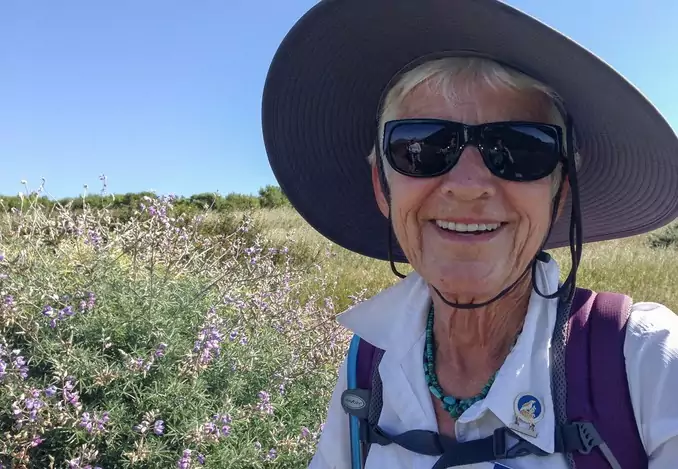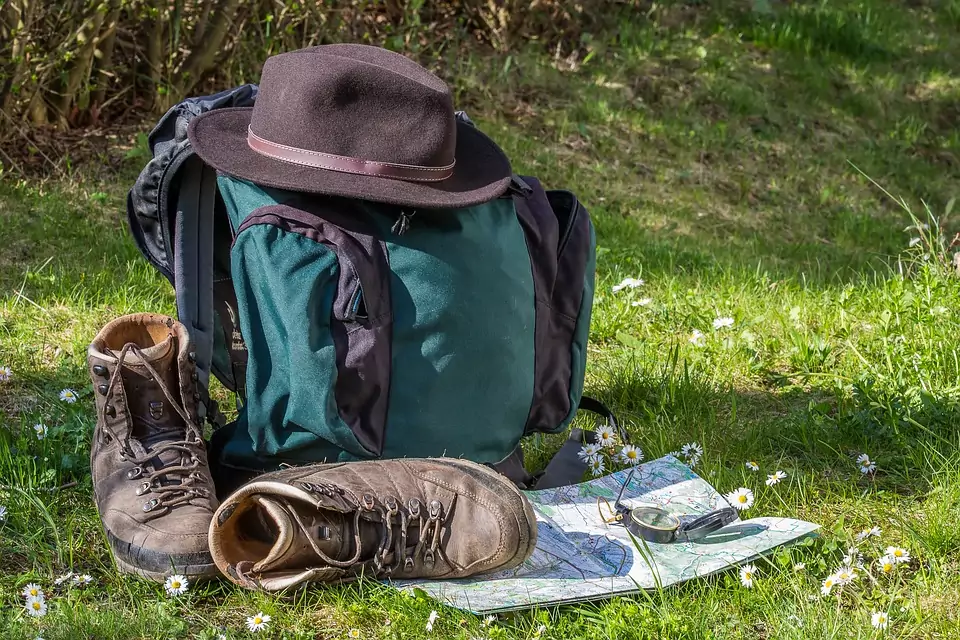Whether you are a hiking pro or an amateur, there are some hiking must haves that will make your experience more enjoyable and comfortable. The type of gear you choose will be determined by the kind of hiking you are involved in. This can either be day hikes, backpacking, trekking or walking tours.
Also, when picking your hiking gear, other factors will determine what you need to carry with you. Such factors include duration, distance, activities planned, natural environment and applicable government regulations.
Preparing for your Hiking Checklist
When planning your hiking trip, you might be required to understand the challenges and conditions for each voyage. Also, gather enough knowledge of where you are going on a hike.

This information is helpful in guiding you on what you need to pack.
Factors to Consider Before Making the Checklist
Water Availability
Water is essential, especially while hiking in the scorching sun. In this case, you need to have plenty of it in your backpack. There are places, however, that have plenty of water sources, saving you the stresses of carrying water with you.
Be sure you know the distance between the water sources. This information will help you decide the amount of water you need to fetch to sustain you until the next stop. Also, being aware of the type of water source, either fast running or stagnant, will help in determining the kind of water purification method you need. Our piece on purifying water using bleach is a must-read, so check it out.
The Expected Daytime and Night Temperatures
Knowing the kind of weather and temperatures to expect during your expedition, determines a lot what to carry. You can depend on weather forecast stations to know about climate changes. Consider using the historical weather changes of the area you are going to, to predict the possible weather condition. Night temperatures can profoundly interfere with your sleep.
To avoid getting cold as you sleep, make sure you have a warm sleeping bag and also use a ground pad to provide insulation and warmth. On hot days, you need lighter clothes and a lot of drinking water to keep you hydrated. Also, consider lighter shoes and socks. Wearing light clothes prevents you from burning up or even slowing you down due to the excess heat.

While checking out for temperature rate, it is necessary that you also keep an eye on the perspiration, cloud cover, and the intensity of the sun’s heat. Thick cloud cover might be a sign of an upcoming storm, in which case you require shelter to keep you dry.
Hot solar accompanies a clear sky in most cases. In this case, you will need to wear sunscreen to protect you from the UV ray. When hiking on the extreme south or north, you should consider wearing a sun hat to protect you from the sunset and sunrise rays. In these cases, you might also consider bringing headlight to use in the dark.
Number of People in the Group
The number of people in your hiking group affects the amount of luggage you carry. The more the people there are, the better as you will distribute the stuff amongst yourself. You should also decide all together, on the type of cooking you want to do. In case you cook as a group, you will need a larger stove.
Each person in a group carrying their stove is easier, but then, eating together is more fun. Also, when there are many of you, chances of somebody getting hurt are high. Consider carrying a more extensive first aid kit with extra supplies. For more information on the top first aid kits you can use, click on the link read our article.
Animal Threat
Depending on the area you are going hiking, you should consider having protection against animals and pests. If the destination is bear infested, bring along your bear spray. A bear bell is also useful in preventing a surprise encounter. Have your hip belt at hand and a shoulder strap since anything is possible. See our article on how to ward off animal attacks to stay safe on the trail.

If the destination is warm, humid and windless, be ready for an encounter with bugs and mosquitoes. In this case, you need to bring an insect spray and wear clothes that don’t leave any skin exposed. You can also treat your clothes with permethrin days before hiking to repel the bugs.
Regardless of whether you are in a bear infested area or not, bringing a stuff sack and parachuted rod to store your food on trees at night safely, is crucial. It protects it from rodents such as mice. For bear infested areas, consider packing your food in bear canisters.
Expected trail mileage
The length, condition, and the terrain of the trail, matter a lot when you are preparing your hiking checklist. If the distance is long, consider reducing your gear as much as possible. Also, consider using hiking poles to help keep you balanced and release the strain on your knees.
The terrain condition can be determined by checking with the local trail sites. In the case of muddy and snowy trails, you might consider using a bit heavier boots for extra traction. At some point, you might be needed to cross rivers.

It is important to determine the depth and bring a pair of sandals to change into to keep your feet dry. The terrain affects the type of gear you carry with you while hiking, meaning that you need sturdy and strong equipment if the destination is rocky and sandy.
Remoteness
Some hiking destination might be too remote without network signal. You need to determine how you would reach out for help in case an emergency occurs, when in such places. You might also consider if the place has many hikers within the area who can offer you immediate assistance.
Fire Restriction
It is always fun to make fire while camping or hiking. However, you need to consult with the authorities in the area you are hiking, to see whether it is allowed or not. In some regions, there are restrictions against using certain kinds of wood as they may cause diseases and pests in the area. In such a case, you should buy firewood from the local center. Also, in places where there is limited deadfall, you should consider bringing your own.

The Essential Hiking Essentials
The following list contains a list of equipment that will save your life throughout your backpacking adventure. You do not necessarily need to use them on a daily basis, but they will be helpful at one time or the other. Also, while shopping, and counting on this stuff for your survival in the wilderness, you need to know that experience, and good judgment is of great importance. You do not necessarily have to be a hiker your entire life to possess the items from the list. Instead, you can learn from other people’s experience and read a lot of materials on hik ng topic.
Having the right equipment is one thing, knowing when to use it is another. That is why common sense is an essential tool that you need to possess all the time. Regardless of the place or the length of your hiking trip, using our list correctly can make a big difference in your entire expedition.
Pocket Knife and Tools
This is one small piece of equipment that is small yet has multiple functions in the wilderness. It can serve in:
- First aid
- Making repairs
- Food preparation
- Cutting mile skin straps
- Cutting ropes
A Swiss pocket knife mainly comes with a variety of features all wrapped up to 6 ounces.
- Cap lifter
- Corkscrew
- Wood saw
- Slip joint
- Nail file/cleaner
- Pliers/wire crimper/cutters
- Can opener
However, when buying a pocket knife, you need to be conversant with your needs.

If there is a certain feature incorporated in a knife, but you do not use, you can leave it to cut on weight. See our list of the best pocket knife your camping needs.
Map and compass
You need an appropriate map for the area you are going. It should be detailed as possible and reveal all the necessary information. The most critical thing, however, is knowing how to use it!
A good compass will save you from losing your track.Just as the map, you should be in a position to read it well.
Consider buying a compass that possesses the following features:
- 0-360 degree reading with a 2-degree increment
- Has a base plate about 3”-4” long and has a straight edge that will correctly take map bearings and determine the distance on the map, accurately.
- A liquid filled map is recommended as it has minimized fluctuation while the liquid protects the magnitude needle and the jewel bearing.
- It should have an adjustable declination to help account for the difference between true north and the magnetic north. A compass uses magnetic north, while the map uses true north. To avoid having to calculate bearing every time, use a compass which is adjustable.
- A clinometer is another important feature for measuring vertical angles and especially helping you in determining the steepness, map positioning, and possible avalanche.
- A foldout mirror enhances the reading of the compass by positioning it in such a position that distance objective and the mirror are visible at the same time.
Flashlight/ Headlight
A flashlight is essential for both day trips, and multi-day hiking trip since you never know when you might be required to walk the last mile after sunset. Use a flashlight that is both small and lightweight. For handheld torch, use a regular bulb to avoid too much battery consumption. Also, make sure you only use it to carry out small tasks around the camping site. A headlight might require a brighter beam as you will need more light during path finding.

Avoid flashlights that use on/off button as the button can easily jam. Instead, go for the ones that need body and head rotating to turn on and off. Consider the following features when buying this valuable tool:
- An all-weather flashlight is the best.
- Buy the one that comes with extra bulbs in its housing.
- Choose a headlight that accepts or comes with bright beam bulb.
Eye Protection
While going for hiking a pair of prescription contact eyeglasses is important. It keeps your eyes protected from UV rays and especially in higher elevations. It also protects you from mountain skies and light reflecting from the snow while hiking in snowy areas.

A good pair of glasses should be lightweight and durable enough and optically correct.
First Aid Kit
It is crucial for attending to minor injuries. Especially carry a lot of adhesive Band-Aids and sterilized bandages since they cannot be improvised
Extra Clothes and Food
You cannot predict that the hiking will go all as planned. Sometimes inclement weather might make you get trapped, or you might lose your track, hence delaying you for more days than you had planned. To be on the safe side in case it happens, you need extra day’s food and clothes.

Make sure the food needs no cooking or need little cooking in which case you will require more fuel. An emergency shelter is necessary. Since you are trying to minimize on weight, consider buying a vapor barrier liner. It offers you additional warmth in your sleeping bag, and in the case of emergencies, it acts as a shelter.
Waterproof Matches and Fire Starter
Waterproof, windproof or all weather matches are a necessity when you are packing your hiking essentials. They should be separate from your normal matches and should only be used in emergencies. A fire starter, on the other hand, is helpful when you want to light wet wood. You can buy it or use plumbers wax.
Water Filters/Bottles
If you are conversant with the area you are going hiking, you already know the type of water bodies around. You also know how much water you need to sustain you until you reach the next water point.

Make sure before using the water you either purify or boil it to kill germs. Make sure you are using lightweight bottles.
Whistle
A whistle can save you a lot if you get lost, or someone in your group does. In case you get hurt and seeking for assistance, it can be of great help. The best whistles are plastic since they are plea-less and therefore useful even in the mountains.
Sunburn Protection
Depending on your capacity to withstand solar heat, choose the most appropriate sunburn protection. Using lightweight clothes and hats with skirts to shield your neck.

Apply enough sunscreen to any exposed skin and ensure you bring some more sunscreen with you to keep on applying regularly.
Insect Repellants and Clothing
If you have gone hiking during summer, then you know there are lots of irritating insects, including mosquitoes, biting flies, and other bugs. You can protect yourself by wearing lightweight baggy clothes (baggy clothes will leave no skin uncovered when you bend).

Another option is carrying an insect spray.
Extra Precaution
- Travel Medical Insurance – while backpacking far away from home, you never know when a medical emergency might occur. For this reason, it is necessary to take an insurance of urgency.
- Avalanche Safety – avalanche should not stop you from hiking, camping or backpacking in areas they occur. But you need to take an extra precaution of having tools such as: snow shovels (an ultra-light shovel can help you dig out one of your hiking mates in case they get buried in snow); wands with flags to strategically place in your paths and especially at night ( they ensure you do not miss your track in case snow buries your way at night); avalanche beacons and probes ( the traditional ones are slowly being replaced by digital ones, but whatever the case, they are a must if you are hiking in avalanche prone areas. They help you in pinpointing the area where an avalanche is possible.). Having these tools might seem obvious and silly, and to some, they are easy to ignore, but they are for your good and safety.
- A Weather Station – when hiking in the mountains or you are canoeing, a weather station is an essential. It should include the following instruments: altimeter (for measuring the altitude. When used in combination with the map and compass, you can easily know your exact location. Luckily enough, there are hiking watches that incorporate an altimeter and a compass.); anemometer (it can help you determine the wind speed when you are in the waters); barometer ( it helps you determine atmospheric pressure and hence predict the weather and altitude. Similarly, some watches incorporate a barometer.); hygrometer (you can use it to determine the amount of moisture in the air.)
- Portable Phones – they are a great way of contacting each other in case you take different routes. Ensure you only use them for emergencies to preserve power.
Wrapping it up
Your hiking destination will determine a lot the kind of clothing you should carry. Make sure you have done a previous survey prior embarking on the trip. The most important thing when hiking is using your knowledge of the wilderness. Take your time to study the area you are going and thoroughly familiarize yourself. Doing this can save you while packing your checklist.

Also, while planning a hiking expedition, try to go as a group to help in sharing the necessities. There are some items, however, that each should carry their won. During the trip, make sure you keep same track, and in case you have to separate, let no one go on themselves. This way, you will always be there for each other.
Now that you know how to make a perfect checklist for your next hiking expedition, we hope that you can share your thoughts on this topic, or ask questions if you have any, in the comments section below. We wish you a safe hike and we also hope that you will come back with many happy memories.









You’re definitely right, Wayne. Apart from the hiking must haves, you need hiking partners who you can create memories with and help you during a survival situation.
Hiking is fun when you are fully packed with the most essential items. You should also remember to carry versatile gears, such as a solar powered flashlight and charger.